11 times Ford gave the Mustang extra punch
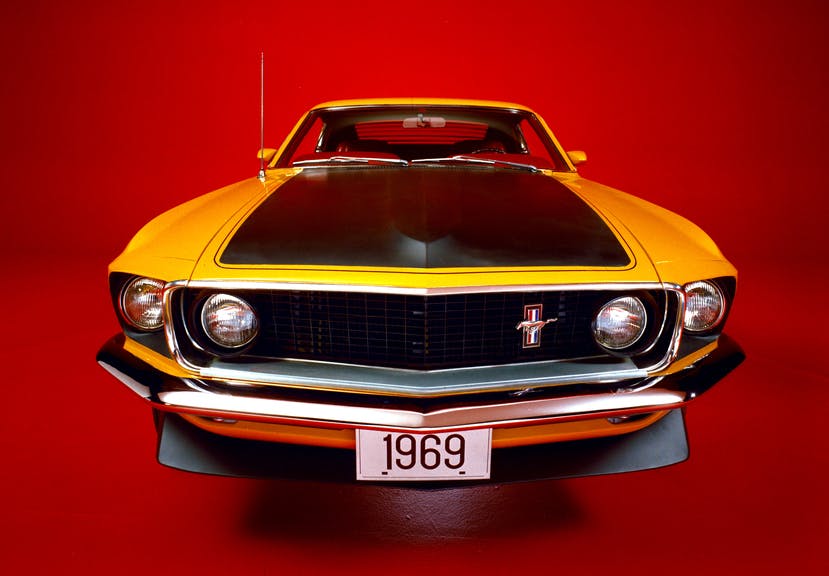
The 2024 Dark Horse has the goods to turn the seventh-generation Mustang into a top-tier performer: 500 horsepower, a six-speed manual transmission, MagneRide dampers (if you spec the Handling Pack), a Torsen limited-slip differential, a host of cooling upgrades … the list goes on. There’s even a track-specific model coming soon, dubbed the Dark Horse R, which could prove worthy of yesteryear’s Cobra, Cobra R, and even certain Shelbys.
Speaking of the past, which Mustangs in Ford’s illustrious history are on par with the 2024 Dark Horse? We’ve compiled a list of 11, including at least one Dark Horse–worthy example from each generation. Yes, we even found one from the Mustang II family.
1965 Mustang K-Code
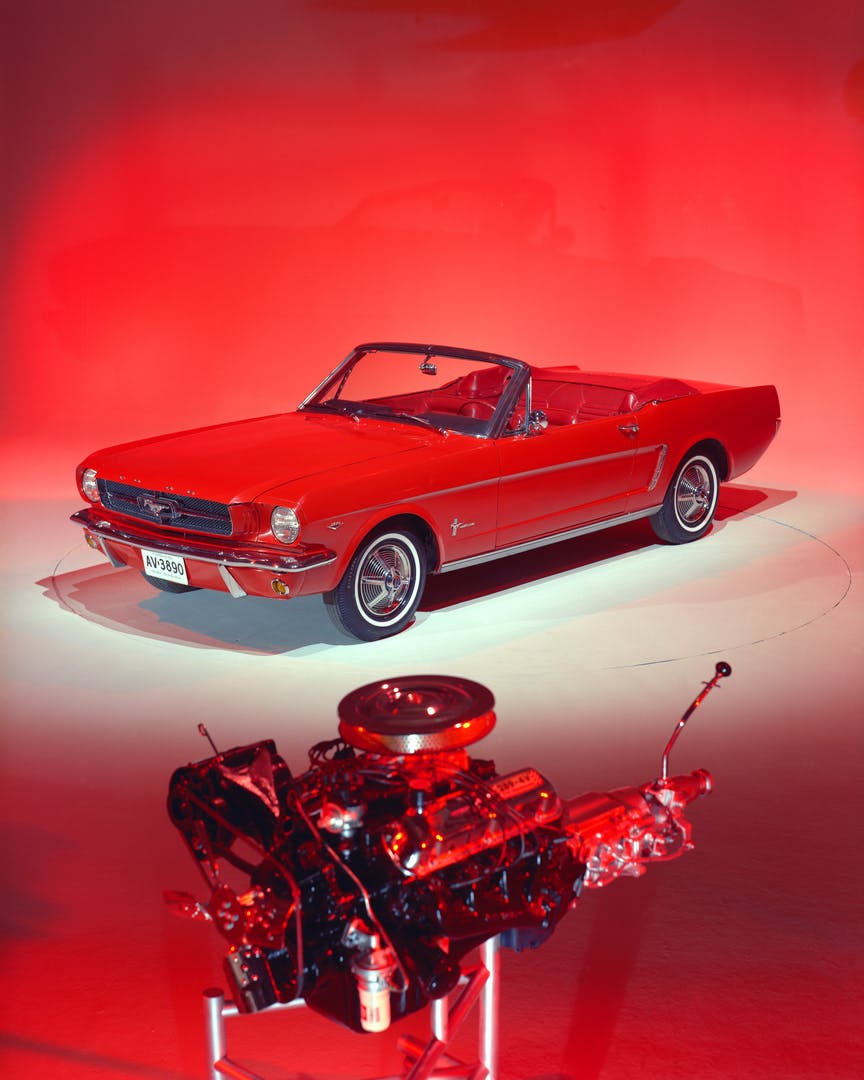
K-code Mustangs changed the way we thought about the original pony car. No longer just a stylish mode of transportation for younger audiences, the K-code option turned the Mustang’s 289-cubic-inch V-8 mill into a high-performance powerplant. A unique emblem sandwiched between the front fender and the 289 badge made it clear a K-Code wasn’t any ‘ol pony. Under the skin were, solid lifters, high-flow cylinder heads, a heavy-duty crank, a larger carburetor, chrome valve covers, and a unique air cleaner.
That said, to be a true forefather to the Dark Horse, a K-code needs a few more options. Get me the GT Package and a limited-slip differential, and have them both installed in a fastback body, please!
1969 Mustang Boss 302
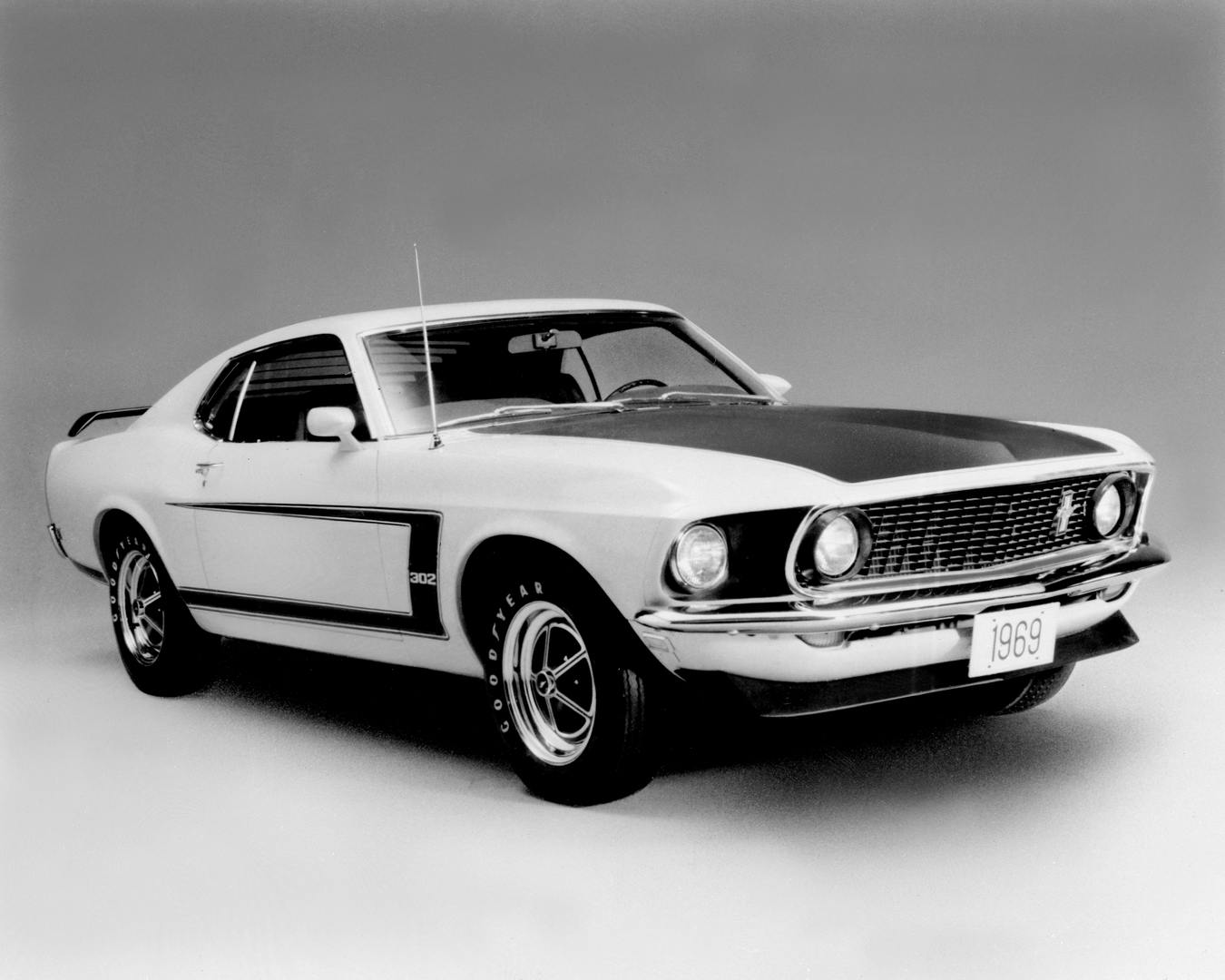
The mission of the 2024 Dark Horse is very much in line with that of the original Boss 302 Mustang, a street car with the Trans Am racing series in its sights. All the requisite hardware came standard in 1969, including the potent small-block V-8, though the choice of a short- or a wide-ratio four-speed manual transmission was up to you. Interior options ranged from mild to wild, depending on whether you needed a street car or a stripped-down track weapon.
1972 Mustang 351 H.O. R-Code
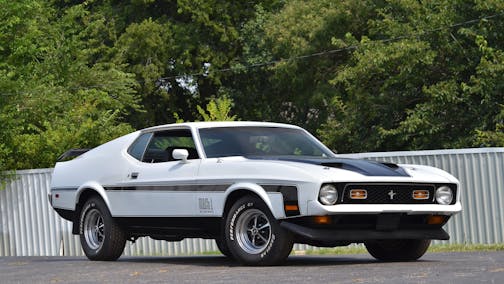
The beginning of the Malaise Era wasn’t kind to any vehicle, but, before the horsepower party ended, Ford made a final push. The 1972 Mustang could be optioned with the R-code motor, also known as the 351 H.O. (for High Output) engine. The V-8 revved well thanks to the big valves of the Cleveland engine family’s cylinder heads, even though compression was slightly lower than that of past Boss 351s. There was a cold-air kit, a top loader four-speed manual, and a mandatory air-conditioning delete to ensure that R-code Mustangs were taken as seriously as possible. Then again, maybe not: The R-code package was a standalone option, meaning any Mustang could have the 351 H.O. engine, including the luxurious Grandé version.
1976 Mustang II Stallion
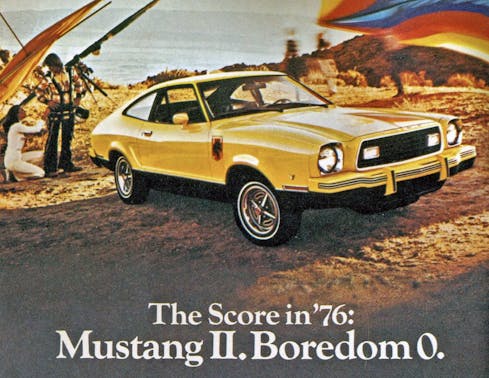
Why must we always justify our appreciation for the Mustang II? It sold amazingly well, turned like a dream, and took a little malaise out of this dark era in automotive history.
Consider the 1976 Mustang II Stallion a Disco Dark Horse, if you will. The Stallion package was pretty simple, mostly just a blackout trim affair and a limited color palette. But it came with a rather delicious decal for the fenders.
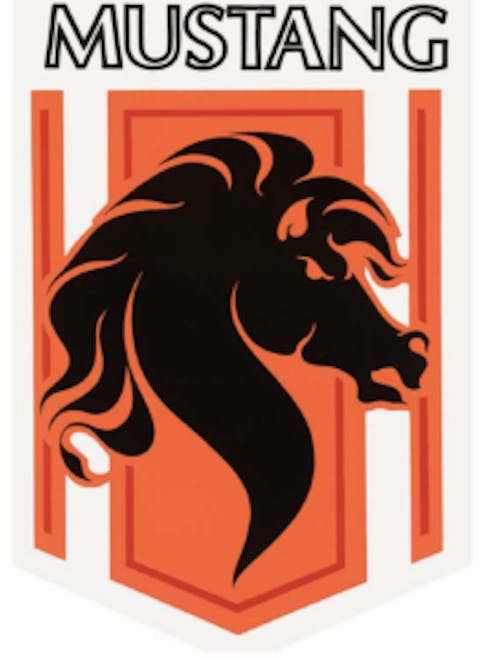
While it may not be as iconic as the Pontiac Trans Am’s screaming hood chicken, the decal was one of many things to like about a Mustang II Stallion, provided you optioned it to your needs and wants. The 1975 model year even brought back the 302-cubic-inch V-8 to the Mustang’s options list. However, the Stallion’s nose-heavy demeanor and mandatory automatic might not be ideal for a predecessor to the Dark Horse. Also, if we imagine ourselves in the 1970s, we need to save money on fuel, right?
Consider a Stallion trim package with the slim and efficient Cologne V-6, a four-speed manual, and the Rallye Package’s limited-slip differential, refined suspension, and upgraded cooling. And if you add the forged aluminum wheels for less unsprung weight? Well, you just made a Dark Horse for the Dark Ages of Motoring.
1983 Mustang GT Turbo

Dare I suggest it? The Fox-body Mustangs were a high-performance revelation in an era of lower emissions and higher safety standards. You should never forget about the stealthy 5.0-liter Mustang LXs, especially the notchback sedans, but, in this case, there’s a turbocharged Fox Mustang that deserves more recognition.
The 1983–84 Mustang GT Turbo had the same suspension, interior and cosmetic upgrades as a V-8-motivated GT, but had a turbocharged and fuel-injected version of the Mustang’s 2.3-liter overhead-cam motor. GT Turbos were similar to the Thunderbird Turbo Coupe, which might be why Ford squeezed it into production before the similar (but wholly superior) Mustang SVO made the T-Bird pointless sometime in 1984.

Will the Dark Horse will be a flash in the pan? Or does the Dark Horse have more staying power than either the GT Turbo or the Mustang SVO? If so, please accept our apologies.
1993 Mustang SVT Cobra
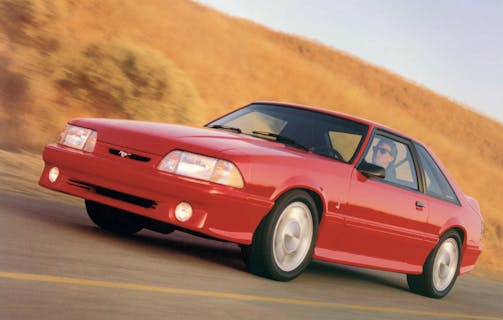
Turbocharged Fox-body Mustangs are fine and dandy, but let’s face facts: the 5.0-powered Mustang Cobra is the best 1980s analogue to today’s Dark Horse. The exterior upgrades are on point, as are the impressive upgrades to braking, suspension, and acceleration. The 1993 Cobra was a finesse player, especially in its refined suspension tuning: Odds are the improvements here are on par with those of the new Dark Horse.
1995 Mustang GTS
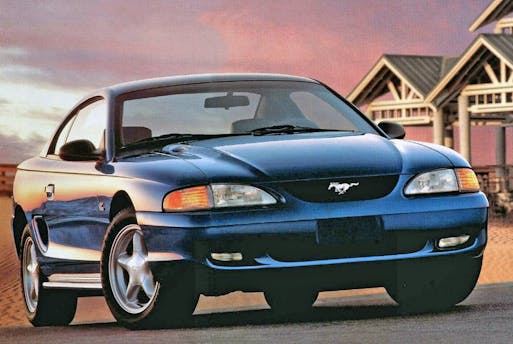
The 1994–2004 (SN-95) Mustang was the foundation for a vehicle that might be just as special as the new Dark Horse, but for a completely different reason: Instead of adding things to improve on the Mustang’s winning formula, the 1995 Mustang GTS deleted as many things as possible.
Power windows, power locks, and those heavy articulated bucket seats from the GT? In the dumpster. The GT’s rear spoiler, fog lights, 17-inch wheels, and antilock brakes? No thanks! Simplicity was the beauty of the Mustang GTS, even if it was officially on the books for a single model year. The GTS lived on as a bare-bones Mustang GT until 1998, which could foretell the Dark Horse’s future: some of the special bits (or lack thereof) might be fused into a mere Mustang GT come model-year 2025. Only time will tell …
2003 Mustang SVT Cobra
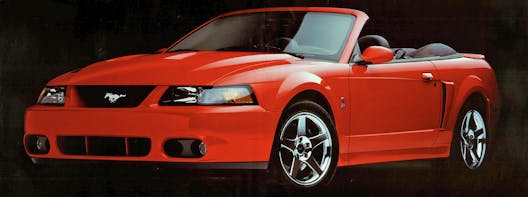
Again, like the 1993 Mustang Cobra for Fox-bodies, the 2003–2004 “Terminator Cobra” is the ultimate expression of the SN-95 Mustang. But the Terminator’s changes are even more radical than the Dark Horse’s improvements.
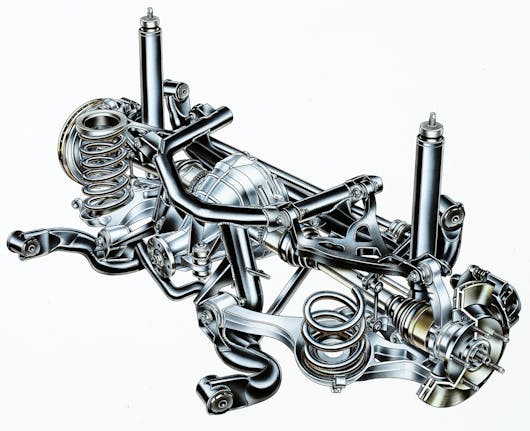
There’s the independent rear suspension, a supercharged 4.6-liter V-8 with 32 valves and four camshafts, a six-speed manual, and improved steering and suspension tuning. This is all the stuff of dreams for a mere 16-valve, stick-axle Mustang GT. Considering the Terminator’s absolutely radical engineering—at least, for a mainstream Mustang—does it really have any peer?
2008–09 Shelby GT500KR
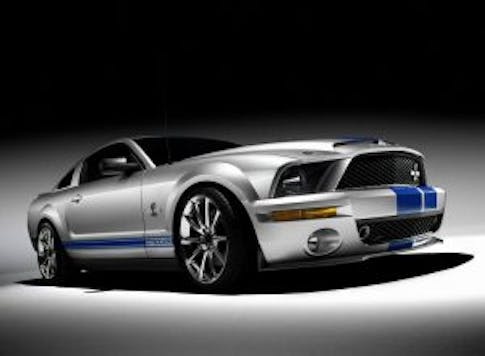
The fifth generation (S197) Mustang was a solid performer out of the box, and the 2007 Mustang Shelby GT500 was a worthy tribute to the Terminator Cobra. But there was something even better in this era, a car that sported the requisite number of tweaks to make it the Dark Horse Mustang of 15 years ago. Meet the 2008 Shelby GT500KR. The KR was indeed the “King of the Road” as it had more power, more gearing, a unique hood, and a revised suspension over the already impressive hardware found in a “mere” GT500.
In some ways, the GT500KR is the perfect Dark Horse throwback, as the 2024 GT promises to be a serious performer just like a “regular” 2008 GT500. We might have multiple Kings of the Road on our hands now!
2012 Laguna Seca Boss 302

If we opened the door with the improvements between the GT500 and GT500KR in the S197, aren’t we honor-bound to do the same thing for the Boss 302 and the Boss 302 Laguna Seca? The Laguna Seca edition added Recaro seats, a Torsen differential, revised suspension tuning, grippy tires, brake cooling, and a deletion worthy of the GTS: the back seat was removed and a chassis brace was put in its place.
2020 Mustang EcoBoost High Performance Package
Much like the Mustang SVO of the 1980s, the EcoBoost HPP (High Performance Package) raided Ford’s parts bin to make a truly impressive vehicle that few remember even a mere three years later. This four-cylinder Mustang was no slouch, with 330 horses (presumably using tuning from the Focus RS hatchback) and the brakes and aerodynamic enhancements from Performance Packages available on its eight-cylinder brother. There was even an optional “EcoBoost Handling Package” with MagneRide dampers, a Torsen differential, wider wheels, a thicker rear sway bar, and sticky Pirelli summer tires. Four cylinders be damned, this Mustang is absolutely worthy of Dark Horse comparisons.
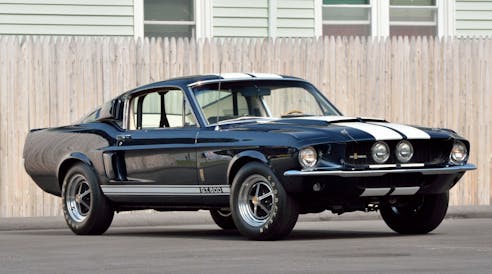
But there can’t possibly be only 11 predecessors to the new Dark Horse. What other Mustangs cast a shadow long enough to reach Ford’s latest “shade-throwing” performance icon? You tell us.
***
Check out the Hagerty Media homepage so you don’t miss a single story, or better yet, bookmark it. To get our best stories delivered right to your inbox, subscribe to our newsletters.
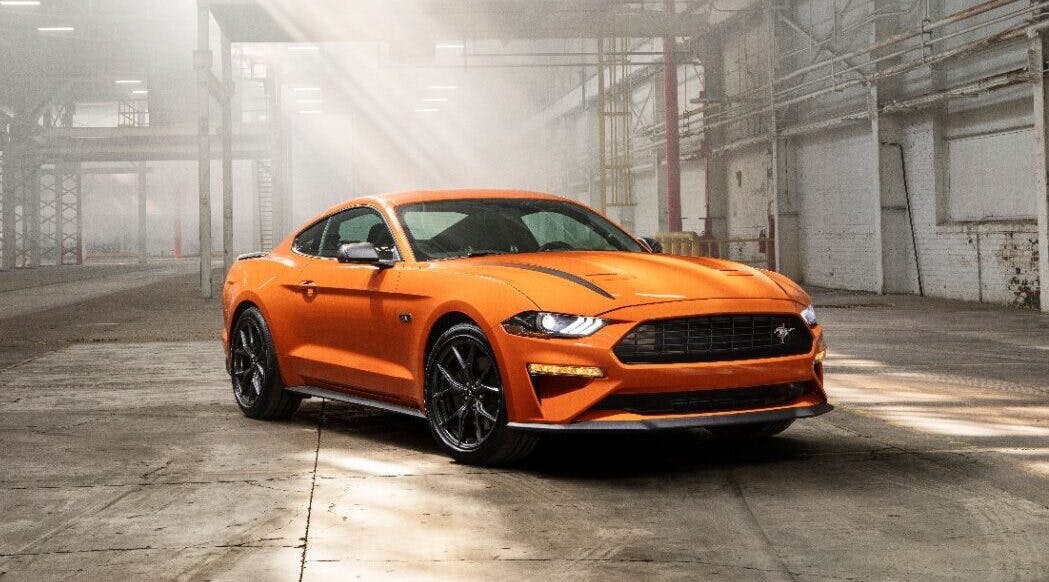
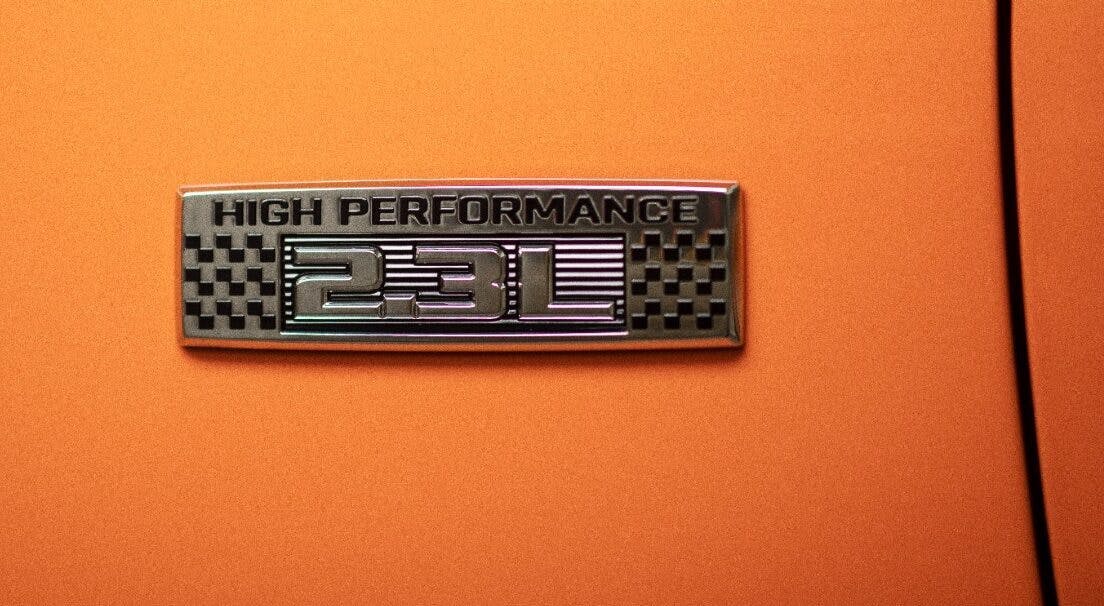


This list can’t be complete without the 1968 Cobra Jet.
That was a game changer.
I was thinking the same as you. I owned a 1969 Mach ! 428 4-speed. Bought it new for less than $3500.00 using my father’s “A” plan.
I bought a 1969 Mach 1 428 CJ C6 auto in 1979 for $1,950. I’m looking at it right now in my garage!
So Cool!
I might have missed it. Seems to be missing the BOSS. That being the Boss 429. Grabber Blue was my favorite……
You started off pretty good, then I’m not sure what happened.
’76 Black Stallion? Just because of a sticker? If you’re going to pick a II, then the Mach of that era or Cobra would be much better choices.
83 GT…Turbo? I think a V8 should be a prerequisite here, and in that vein, an 82 GT 5.0 best represents the game changer.
95 GTS? A woefully pitiful attempt to capture some fox Mustang LX 5.0 cache. Not a proud moment.
The rest seem OK. Although I probably would have mentioned the 2011 GT since that kicked off the reboot of the 5.0 which the Dark Horse has to thank for its powertrain.
Agreed.
Yes, because of a sticker with a “dark horse”. That’s the joke. No matter, it’s just a trim package like a Cobra or Mach. It’s not like you could get better performance with the other two trim jobs.
Ahhh. If it was in jest, then please print my retraction.
Dark horse wordplay is a part of it, but the Stallion is just as cool as any other Mustang II. It’s my second favorite, after the Ghia.
Much like a fungus, the Mustang II has grown on me. I would probably pass over the Stallion though (despite my Italian heritage), and go for a nice clean 77 Cobra with a 302, 4 speed and t-tops in black and gold (in sync with my Italian heritage).
Not gonna lie, I briefly drove one and the moment I threw it into a corner I liked it better than any first generation Mustang. If I was Italian, I woulda had a Stallion by now. 🙂
Speaking of extra punch, along with the first gen Boss 302, the Boss 429 should have been mentioned. Also, replace the Shelby KR with the 2007-2014 Shelby GT500 (S197) going from the merely ridiculous 500HP to 540HP to the bonkers 662HP then the 2020-2022 Shelby GT500 (S550) with the ridiculously awesome 760HP.
Curious as to why the 2015 GT350R and 2020 GT500CFTP didn’t make the cut.
2005 TO 2010 ??
That Mustang II is just sad, I can’t get excited about any of them.
The best way to appreciate the Mustang II is to recognize that without it, there would have been no Mustangs after.
In my opinion, the Mustang II also needs to be appreciated for resetting the Mustang back to a proper size (in the future version). Mustang had become porcine.
Yeah boy howdy, nothing says Mustang like the sound of a 4 cylinder.
Much better than the Cobra Jet you left out, eh?
No 428 CJ, Boss 351 or Boss 429? Even the 67 Mustang with the 390 High Performance was a big step forward. Whatever you’re smoking, I need some of it.
If a 1985 Mustang is a “Fox-body”, built on the Fox (Fairmont) platform, what would a 1985 Lincoln Continental, built on the Fox platform be called…?
Wouldn’t “Fox-platform” be more accurate?
Fox Body may not be as accurate as Fox Platform, but it still refers to the shared unibody design of all things made from the Fox. Platform, Chassis, and Body are words that are seemingly interchangeable these days, and Fox Body sure seems like the most well recognized.
A Mustang II, with the German V6, or a 140 horsepower 302 2V? Where is the turbo, or a 4V carb? The the AMC Gremlin was a better car! The Cobra II and King Cobra had no venim.
It may have been ” … the right car at the right time, selling more than 1 million units in four years”, but the Mustang II, in spite of sales numbers, was a black mark on Ford, the Mustang name, and it’s performance image.
Apparently the Boss 351 had to give up it’s place on the list so the Mustang II could be listed…seriously?
Everything is relative to the time they were upgraded or introduced. Those mid 70’s to mid 80’s were pretty bleak times for “performance” cars. So anything that even resembled one was an upgrade. I was fortunate to grow up and attend local drags in 69 and early 70’s when muscle cars were everywhere. Most were 15,14, maybe 13 second machines at best stock. However, most did not stay that way for too long and were modified for better performance. Probably the one thing that hurt early cars were the street tires were not that great for dragstrip duty.
Now look at today’s Mustangs, wow, what performers. We shall see what the next decade brings to the mighty pony.
And no mention of the 2003/2004 Mach 1’s? The ugly cousin of the Terminator Cobra? They were minus the supercharger, but better in every other way, including the last ‘Stang with the Shaker. The Dark Horse? Uglier then 10 days of rain. Less Camaro, more Ford Mustang please, also, ditch the hideous headlights already.
Not so much ugly as throwback. It got a lot of looks at the gaping hole in the hood while checking the oil at the self serve gas bars. Oh that shaker was fun to watch twitching, and leaning over hard under full throttle.
Got a fair bit of hardware at car shows for that genre of Mustang, ’99-’04. One admirer asked if it had a 427 while looking at the massive DOHC heads.
I had mine for 9 years. Had enough factory oomph to get into the 13’s and with the factory handling goodies was a ball on twisty road courses.
It was a very pleasant highway cruiser and point and shoot traffic sorting appliance in city driving. Made all the right noises through the Borla exhaust too.
You folks left out a couple of out the best Mustangs! 1969 428 Super Cobra Jet, 1970 Boss 429